



Tuftsin
Molecular Formula: C33H57N11O9
Molecular Weight: 751.9 g/mol
Brand: Dragon Pharma Peptide Line
Strength: 10 mg/vial
Unit: vial
Delivery from International Warehouse 15 days/ US Domestic 5 days
Note: Peptides will arrive in a powder form for maximum stability!!!
Among modern synthetic peptides, Selank stands out as one of the most consistently discussed research compounds—and not simply because it's fashionable. Its design reflects intentional engineering rooted in molecular biology, not marketing hype.
Developed in the late Soviet era at the Institute of Molecular Genetics, Selank was created as an optimized analogue of tuftsin, an endogenous immunomodulatory tetrapeptide. Tuftsin showed promising biological activity, but its rapid degradation made it impractical for extended study. Researchers responded the way good peptide scientists do—they re-engineered the molecule.
The result was a heptapeptide,
Thr-Lys-Pro-Arg-Pro-Gly-Pro,
a sequence both deceptively simple and biologically robust. The extended Pro-Gly-Pro tail wasn't added for aesthetics; it fundamentally improved the peptide's metabolic stability, allowing it to persist long enough to demonstrate its regulatory potential in experimental models.
What truly distinguishes Selank in research environments is its multifaceted neurochemical profile. Unlike benzodiazepines, which strongly occupy and modulate GABA receptors, Selank's activity appears more subtle—more regulatory than forceful. Preclinical studies suggest it may influence:
GABAergic signaling (in a modulatory—not suppressive—manner)
Serotonin and dopamine pathways
Enkephalin expression, which affects stress and behavioral responses
This combination of actions is unusually dynamic for a molecule of its size, and it's one reason Selank continues to attract scientific interest. Its structure is small; its functional footprint is not.
Selank attracts the attention of peptide researchers for a reason that goes beyond its structural elegance: its potential influence on gene-level regulatory activity.
Early investigations noted that Selank may affect a substantial subset of genes associated with GABA-related signaling, a scale of modulation rarely attributed to small peptides. In preclinical work, shifts in expression patterns across dozens of GABA-associated genes have been observed—an effect profile that pharmaceutical developers often pursue with far more complex molecules.
The proposed mechanism is notably sophisticated. Rather than acting as a direct GABA-A agonist—something that typically produces heavy sedation—Selank appears to function through allosteric modulation. In simple terms, instead of forcing activity at the receptor, it may subtly adjust the receptor's conformation, allowing endogenous GABA to interact more efficiently.
It's the difference between amplifying a signal naturally and overriding the system with brute force.
This helps explain one of the early curiosities surrounding Selank research. In models where enhanced GABAergic activity usually produces drowsiness, Selank did not. Instead, researchers noted a combination of reduced anxiety markers with maintained or even heightened alertness—a profile that sets it apart from classical GABA-modulating compounds.
Then there's the BDNF component. Brain-derived neurotrophic factor isn't just a buzzword—it plays a central role in synaptic plasticity, learning, and neural resilience. Some preclinical studies indicate that Selank may increase BDNF expression in hippocampal regions, suggesting a potential link between the peptide and pathways related to neuroplastic adaptation.
For a seven-amino-acid sequence, that's a surprisingly broad biological footprint.
The GABA-related findings surrounding Selank become genuinely compelling once you look at the transcriptomic data.
Modern gene-expression analyses suggest that Selank may influence the transcription of multiple genes tied to GABAergic signaling, including receptor subunits, transport proteins, and ion channel regulators. Rather than minor, incremental shifts, these appear to be broad-spectrum alterations—an uncommon signature for a peptide of this size.
The peptide's proposed mechanism is equally noteworthy. Unlike benzodiazepines, which achieve their effects through direct occupation of GABA-A receptor sites, Selank is often described in preclinical literature as a positive allosteric modulator. Instead of competing with endogenous GABA, it may subtly shift receptor conformation to increase affinity for the neurotransmitter already present.
The distinction is important:
Direct agonists frequently create tolerance, cognitive blunting, or dependence. Allosteric modulators, by contrast, tend to preserve more of the system's natural regulatory rhythm.
Comparative research in chronic stress models has shown that Selank may demonstrate anxiolytic-like activity roughly comparable to diazepam, with some studies indicating that combined use enhanced the effects of both agents. The interaction patterns suggest complementary—not redundant—mechanisms of action.
Selank's cognitive research portfolio contains findings that would attract the attention of any neuropharmacology lab.
In behavioral training paradigms such as conditioned avoidance tests, subjects exposed to Selank demonstrated improved learning efficiency, reflected in fewer task errors and higher accuracy. Importantly, this occurred without the stimulant-like side effects that often accompany substances targeting attention or vigilance.
Molecular data offer clues: gene-expression mapping has identified dozens of hippocampal genes—many central to memory consolidation—whose transcription appears altered following Selank administration in preclinical models. This suggests the possibility of deep-level, circuit-relevant modulation, not merely superficial behavioral changes.
Studies examining alcohol-induced cognitive impairment add a further layer. Selank-treated groups maintained more stable BDNF levels under neurotoxic conditions, an observation that has led researchers to propose potential neuroprotective or resilience-enhancing properties pending further validation.
Selank's activity extends well beyond GABA.
Preclinical investigations indicate changes in serotonin metabolism, particularly in brainstem regions associated with mood regulation. These effects appear more pronounced under conditions in which serotonergic activity is experimentally impaired, a pattern that may help explain the compound's stress- and mood-related profiles in various models.
Dopaminergic pathways also appear responsive. Shifts in dopamine receptor gene transcription, especially delayed increases in D5 receptor expression, suggest possible involvement in long-term potentiation and sustained cognitive adaptations.
Another layer involves enkephalin dynamics. Some studies propose that Selank may inhibit enzymes responsible for degrading endogenous opioid peptides, thereby supporting natural enkephalin tone without directly activating opioid receptors. This may contribute to observed influences on stress modulation and behavioral responses.
Selank's immune-system findings were initially unexpected and emerged indirectly from anxiety-focused trials.
Subsequent investigations revealed shifts in interleukin-6 concentrations, T-helper cell cytokine ratios, and expression of chemokine-related genes. Transcriptomic data reinforced these observations, showing modulation of immune-relevant signaling pathways.
This dual neuro-immune profile introduces the possibility of cross-system regulatory effects, though the broader implications remain the subject of ongoing research.
Across preclinical and early human observational work, Selank's reported effects have generally appeared mild. Any adverse events described in the literature tend to be non-serious and transient, though research protocols vary widely.
Because Selank interacts with multiple neurotransmitter systems, investigators emphasize the importance of exercising caution when studying the peptide alongside other compounds that influence GABAergic, serotonergic, dopaminergic, or neuroimmune pathways.
Its immunological effects—while scientifically intriguing—also warrant careful evaluation, particularly in models involving immune dysregulation.
Every batch undergoes analytical verification, including purity testing that typically exceeds 97%, along with chromatographic and spectral confirmation. Certificates of Analysis (CoAs) are available for laboratories requiring documentation for protocol compliance.
All our products are manufactured using the Lyophilization process, also known as freeze-drying, which ensures they remain 100% stable for shipping for up to 3-4 months.
Once peptides are reconstituted (mixed with bacteriostatic water), they must be stored in the refrigerator to maintain their stability. After reconstitution, peptides will remain stable for up to 30 days.
To maintain the quality of peptides, it's critical to keep them cold and shielded from light as soon as they are received. For immediate use or usage within a few days, weeks, or months, short-term refrigeration at temperatures below 4°C (39°F) is sufficient. Lyophilized peptides generally remain stable at room temperature for several weeks, making short-term room storage acceptable if the peptides will be used in that time frame.
For longer-term storage (several months or years), freezing is the best option. Peptides should ideally be stored in a freezer at -80°C (-112°F) to preserve their stability over extended periods.
All information was searched/edited by Dr. S. Edwin, and Dr. E. Croft who holds a doctorate from Case Western Reserve University School of Medicine
Products Usage: This product is intended solely for use as a research chemical. It is designated strictly for in vitro testing and laboratory experimentation purposes only. All information provided on this website is for educational purposes. Under no circumstances should this product be introduced into the human or animal body, as such actions are strictly prohibited by law. This product must only be handled by licensed and qualified professionals. It is not classified as a drug, food, or cosmetic and must not be misbranded, misused, or mislabeled as such.
Please log in to write SELANK 10mg review.
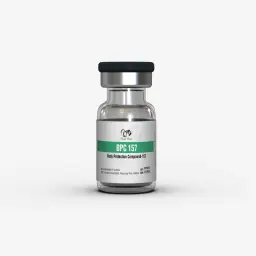
Body Protective Compound 157

image source: https://en.wikipedia.org/wiki/BPC-157
Molecular Formula: C62H98N16O22
Molecular Weight: 1419.53505 g/mol
Brand: Dragon Pharma Peptide Line
Strength: 5 mg/vial
Unit: vial
Buy BPC 157/TB 500 peptide blend
Delivery from International Warehouse 15 days/ US Domestic 5 days
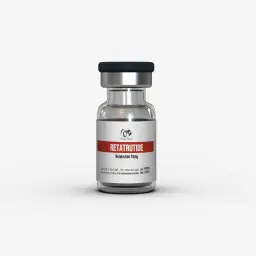
Molecular Formula: C187H291N45O59S
Molecular Weight: 4123.65 g/mol
Brand: Dragon Pharma Peptide Line
Strength: 10 mg/vial
Unit: vial
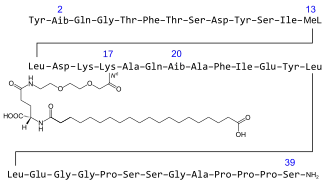
image source: https://en.wikipedia.org/wiki/Retatrutide
Delivery from International Warehouse 15 days/ US Domestic 5 days
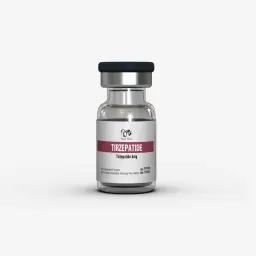
Tirzepatide

image source: https://en.wikipedia.org/wiki/Tirzepatide#/media/File:Tirzepatide.svg
Molecular Formula: C225H348N48O68S2
Molecular Weight: 4813.03 g/mol
Brand: Dragon Pharma Peptide Line
Strength: 5 mg/vial
Unit: vial
Delivery from International Warehouse 15 days/ US Domestic 5 days
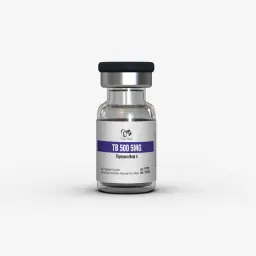
Thymosin Beta-4

image source: medchemexpress.com
Molecular Formula: C212H350N56O78S
Molecular Weight: 4963.49 g/mol
Brand: Dragon Pharma Peptide Line
Strength: 10 mg/vial
Unit: vial
Buy BPC 157/TB 500 peptide blend
Delivery from International Warehouse 15 days/ US Domestic 5 days
November 19, 2025
I recently ordered Selank and the experience was excellent from start to finish. The website is easy to navigate, pricing is competitive, and checkout is smooth.
When the Dragon Selank arrived, the quality exceeded my expectations clean.... consistent..... and clearly high purity.
After finally trying them, I can say this supplier is now my go-to source for premium research peptides with reliable shipping and excellent long-term value.
If you’re looking for where to buy high-purity selank, this supplier is absolutely worth considering.